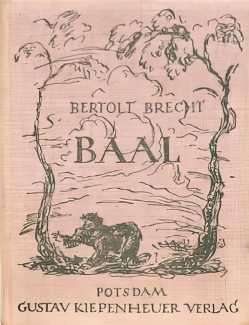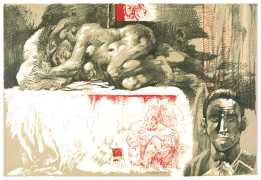 Before he was a playwright, director, theorist or general undesirable, having to flee both Nazi Germany and McCarthy-era USA, Bertolt Brecht was a poet, one whose works were meant to be sung to guitar. Brecht was inspired by performers he had seen in his native Bavaria, like Karl Valentin, a clown who was Germany’s answer to Charlie Chaplin. While Brecht drew on classic German literature and narrative ballads, he favoured popular culture more than the ‘approved’ folk music praised by the German middle class. In the 1920s Brecht’s discovery of jazz, a sordid American import later restricted by the Nazis, would lead to works like Die Dreigroschenoper (The Threepenny Opera).
Before he was a playwright, director, theorist or general undesirable, having to flee both Nazi Germany and McCarthy-era USA, Bertolt Brecht was a poet, one whose works were meant to be sung to guitar. Brecht was inspired by performers he had seen in his native Bavaria, like Karl Valentin, a clown who was Germany’s answer to Charlie Chaplin. While Brecht drew on classic German literature and narrative ballads, he favoured popular culture more than the ‘approved’ folk music praised by the German middle class. In the 1920s Brecht’s discovery of jazz, a sordid American import later restricted by the Nazis, would lead to works like Die Dreigroschenoper (The Threepenny Opera).
Baal, Brecht’s first play, is the culmination of his early work, the fruit of his youth in Augsburg, where Brecht was known for walking around town and in the woods, writing on scraps of paper that he kept in his pockets. Written in 1918 and revised eight years later, Baal is an episodic portrait of a drunk, poet, seducer, murderer and general agent of chaos, but he’s not a feral beast unable to fit into modern society. He is a modernist who clearly sees, as Brecht explained, ‘the amorality of nature all around us, seeing it from a distance with longing and envy.’
The Brecht play resonated with Sitte’s philosophy, and in 1986 he produced a set of six three-colour lithographs titled Baals Lied (Baal’s Hymn); as well as the six prints we have included several other similar lithographs produced around the same period.
The Sinne Baals Lied portfolio was published in Leipzig by Reclam, as Graphic Edition XXIII.




















